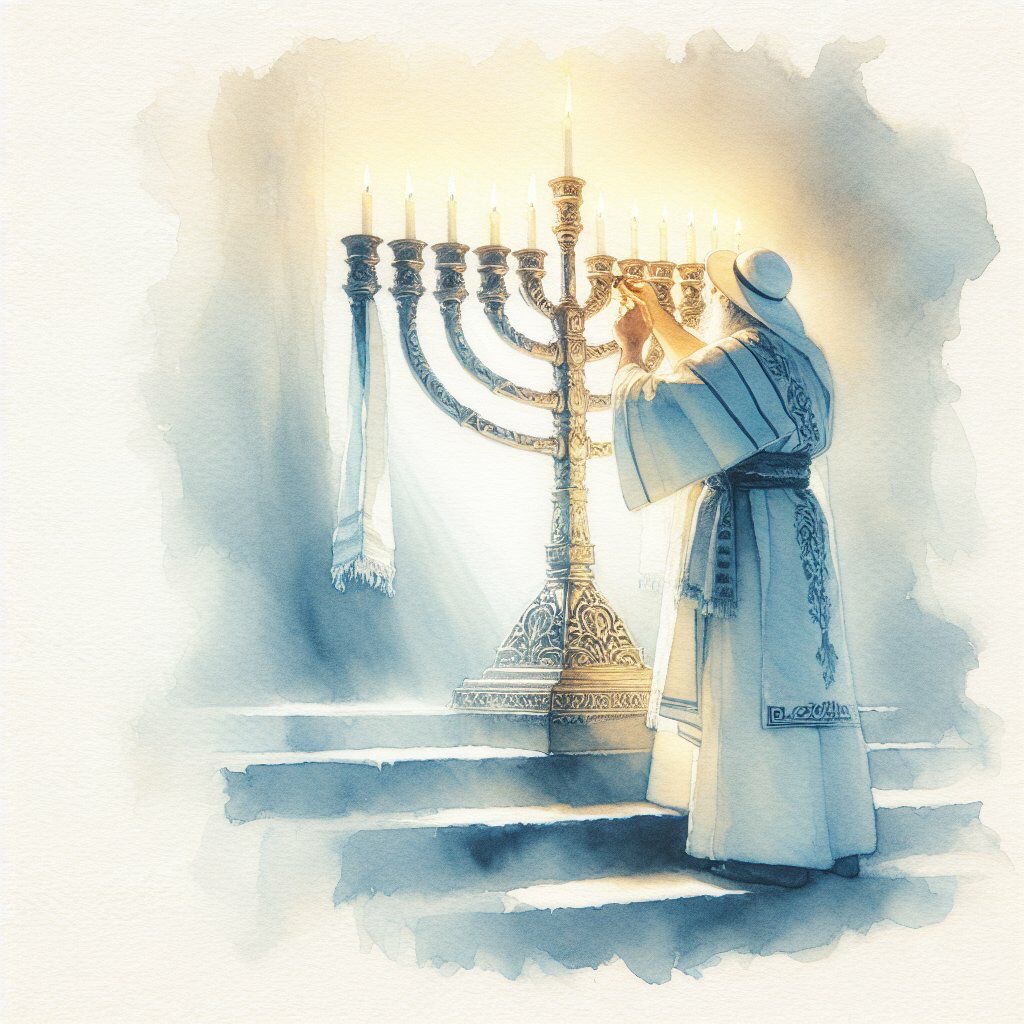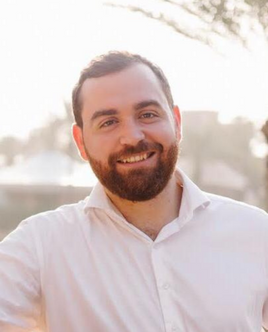Introduction
While preparing for a recent Sunday School class at my church, I was deeply encouraged as I reflected on the offices that Jesus holds. This article is the fruit of that study, and I hope it brings you similar encouragement. It is the first in a three-part series exploring the Mundus Triplex—the threefold office of Christ as Priest, Prophet, and King. This article focuses on Jesus Christ as the Great High Priest.
When people think of Jesus, they often describe Him in various ways. Some of these portrayals, like Jesus the Teacher or Jesus the Friend, are true and helpful, while others, such as Jesus the Philosopher or Jesus the Revolutionary, can be incomplete or even misleading. These descriptions, though insightful in part, often fail to capture the rich theological framework that encompasses the full breadth of Jesus Christ’s redemptive work.
Jesus as the Great High Priest builds upon the foundational categories established in the Old Testament, with Him as the ultimate fulfillment of all that the priesthood pointed toward. The priestly office holds a unique place among His threefold roles, as it directly addresses the reconciliation of fallen humanity with a holy God. Viewing Jesus through this lens is especially helpful when reflecting on His actions and words in the Gospel narratives, revealing how His life and ministry culminate in this redemptive work.
Understanding Christ as Priest requires delving into biblical concepts of the priesthood, the archetypal figures who prefigure Christ’s priesthood, and how Christ uniquely fulfills and transcends these Old Testament roles. Throughout Church history, theologians have emphasized the significance of Christ’s priestly office as the foundation for Christian faith and life.
The Biblical Role of Priest
The biblical role of priest is rooted in mediation between God and humanity, a necessity following the Fall in Genesis 3, which ruptured humanity’s relationship with God. Priests offered sacrifices for the atonement of sin (Leviticus 16:15-16), interceded on behalf of the people (Exodus 28:29-30), and upheld the holiness of the temple (Numbers 18:5-7). Their role symbolized purity and separation, underscoring the need for atonement to restore fellowship with God (Leviticus 4:20). Ultimately, these functions pointed to the perfect reconciliation achieved in Christ (Hebrews 9:11-12).
Archetypal Priestly Figures and Institutions
Several Old Testament figures foreshadow the ultimate High Priest, Jesus Christ:
Melchizedek (Genesis 14:18-20): As king-priest of Salem, the mysterious figure Melchizedek is an archetype of Christ’s eternal priesthood, not bound by the Levitical order. Hebrews 7 connects his timeless priesthood to Christ’s.
Aaron and the Levitical Priesthood (Exodus 28-29): Aaron, the first high priest of Israel and brother of Moses, established the sacrificial system. While his priesthood played a crucial role in Israel’s worship, it was ultimately temporary and imperfect. The mortality of the priests themselves rendered the system inadequate, necessitating continual sacrifices to atone for the people’s sins (Hebrews 7:23-27).
The Day of Atonement (Leviticus 16): The Day of Atonement (Yom Kippur) was the annual event where the high priest would enter the Holy of Holies to make atonement for the sins of the people. This annual event foreshadowed Christ’s final, perfect atonement as the true High Priest, offering Himself for the sins of the people (Hebrews 9:12).
Jesus Christ as the Great High Priest
Christ’s priesthood is the fulfillment of the entire Old Testament sacrificial system. The Levitical priests offered sacrifices repeatedly because the blood of animals could not fully atone for human sin (Heb. 10:1-4). In contrast, Christ, the eternal High Priest, offers Himself as the perfect, once-for-all sacrifice that brings ultimate atonement and reconciliation between God and humanity (Heb. 9:11-14).
The Perfect Sacrifice: Jesus did not offer an animal sacrifice, but His own sinless life. This death on the cross was the ultimate act of substitution, where He bore the sins of His people and satisfied God’s justice. Hebrews 9:12 says, “He entered once for all into the holy places, not by means of the blood of goats and calves but by means of his own blood, thus securing an eternal redemption.”
Eternal Priesthood: Jesus, like Melchizedek, holds an eternal priesthood. His work is not confined to a single historical moment but continues forever as He intercedes for His people (Heb. 7:24-25). Jesus’ priesthood is not contingent on genealogy or the law but on the power of an indestructible life (Heb. 7:16).
Mediator of the New Covenant: As High Priest, Jesus mediates a better covenant than the old one. In the Old Covenant, the blood of animals could never fully cleanse from sin, but Christ’s sacrifice inaugurates the New Covenant, where sins are forgiven completely, and believers have direct access to God (Heb. 9:15).
Application
Assurance of Salvation and Forgiveness: One of the most significant implications of Christ’s priesthood is the assurance it provides. His perfect and sufficient sacrifice grants Christians the confidence that their sins are fully forgiven, unlike the Old Covenant, which relied on constant sacrifices that left the people feeling insecure. Christ’s once-for-all sacrifice guarantees eternal redemption (Heb. 10:14), bringing peace and security in our salvation. In times of doubt or guilt, we can trust in His finished work, knowing our sins have been atoned for. This assurance fosters confidence in prayer, worship, and daily life, relying on Christ’s intercession on our behalf (Rom. 8:34).
Direct Access to God: As the final High Priest, Christ eliminates the need for human mediators in our approach to God. In the Old Covenant, only the high priest could enter the Holy of Holies once a year, but in the New Covenant, all believers have direct access to God through Him (Heb. 4:16). This transformation enhances our worship and prayer life, allowing us to enter God’s presence at any time. It emphasizes our personal relationship with Him, as we can pray directly to the Father, confident that Christ intercedes on our behalf. This profound truth informs our daily lives, reminding us that we are always in the presence of God.
A Call to the Royal Priesthood: As a result of Christ’s priestly work, we are called to be a “royal priesthood” (1 Peter 2:9), set apart to mediate the Gospel through prayer, praise, and acts of service. Empowered by His priesthood, we live holy lives and point others to Jesus, the ultimate Mediator. This calling involves offering our bodies as “living sacrifices” (Rom. 12:1) and interceding for others by praying for the salvation of the lost and addressing the needs of the world through the Gospel.
Conclusion
In conclusion, understanding Christ as the Great High Priest transforms our faith and practice. Through His perfect and once-for-all sacrifice, we are assured of our salvation and have direct access to God, free from the need for human mediators. This profound truth not only strengthens our relationship with God but also calls us to embody our identity as a royal priesthood, actively engaging in the ministry of the Gospel through prayer, service, and love. As we reflect on Christ’s priestly work, may we be inspired to live out our calling, interceding for others and pointing them to the ultimate Mediator, Jesus Christ, who continues to fulfill His redemptive mission in and through us to the glory of God the Father.


